Sirsasana, or Headstand, is a perpetual work in progress for me. I’ve made peace with this for two reasons. First, and most importantly, everything in life is a work in progress. And second, I’m not driven by a desire to do Sirsasana, or really any other pose for that matter. I want to understand it.
My Sirsasana practice baffled me for years. I could never figure out why, for example, my triceps would burn with exhaustion after only ten breaths in the pose. I assumed it was because I wasn’t doing it correctly, or that I wasn’t strong enough, which never made any sense to me because I knew I had the strength. I also couldn’t understand why I wasn’t able to lift up out of my shoulders; no matter how hard I tried, I couldn’t find any buoyancy. I stopped practicing Headstand for a long time, but I never stopped studying the pose.
My earnest exploration led me to a major discovery: my arm bones are shorter than the combined length of my neck and head. This asymmetry explains why I felt compression in my neck and why my triceps would start screaming after only thirty seconds in the pose—my shorter arms require me to push that much harder into the floor in order to create a lift out of my too-long-for-my-own-arms neck. As it turns out, it was never about strength; it was about structure.
I’m not one of those teachers who insists that everyone should practice Sirsasana. There are a myriad of reasons why someone should not practice Headstand. That, and a lot of folks simply aren’t ready to practice the pose. Sometimes it feels like I spend more time in class telling people to come out of Headstand than to come into it. Any amount of forcing for the sake of doing the pose is silly. Besides, if you can balance on your head but you have your head up your ass, you’re missing the point.
But I know that there are folks out there struggling in Headstand like I did without fully understanding the source of their struggle. I see structural discrepancies in my classroom all the time. For every person out there with short arms and a long neck, there’s someone else who has the exact opposite proportions. A student with long arms will be forced to collapse the upper arm bones (shoulders) towards the floor in order to place the crown of their head on the floor. This collapse can lead to compression in the neck and the feeling of not being able to lift the shoulders up without also lifting the head off the ground. Those practitioners often benefit from practicing with a long, accordian-folded blanket underneath their heads. This “lengthens” the neck/head and allows them to lift up out of their neck and shoulders.
I now practice Sirsasana in one of two ways. In the first variation, I hold a block behind my head. The block moves my hands further away from my skull, thus creating more “length” in my arms. The second variation involves using folded blankets under my forearms and wrists to “lengthen” my upper arm bones. I place my head on the mat but my arms are elevated on the blankets. I also place the anterior fontanelle on the floor (slightly forward of my crown) to bring a little more curvature into my neck.
Beyond my physical structure, I’ve also worked to cultivate strength in my practice that has helped me to approach Sirsasana with more integrity. Please know that my Sirsasana practice doesn’t always include Sirsasana. I’m a firm believer that you don’t have to do the pose in order to understand the pose, and that you can find the essence of a posture in infinite ways. Below is the practice I do at home. It’s simple but hard. The key is consistency, curiosity, and compassion.
“Long, uninterrupted, alert practice is the firm foundation for restraining the fluctuations.” -Iyengar, Light on the Yoga Sutras of Patanjali (Sutra 1.14)
Adho Mukha Virasana (Extended Child’s Pose): hands elevated on blocks
Adho Mukha Svanasana (Downdog): long holds, often with my head supported on a block
Tadasana (Mountain Pose) with the following arm variations: Urdhva Baddhanguliasana (Upward Bound Fingers), Gomukasana (Cow Face), Garudasana (Eagle)
Utthita Hastasana (Extended Hand Pose): multiple repetitions holding a block between my hands
Utkatasana (Fierce Pose): holding a block between my hands (not fun)
Tadasana (Mountain Pose) with Sirsasana arms (Headstand on the ceiling!)
Adho Mukha Svanasana (Downdog) into Urdhva Mukha Svanasana (Updog): hands on blocks and toes curled under
Adho Mukha Vrksasana (Handstand): classic and with my hands turned out 90 degrees (multiple repetitions)
Pincha Mayurasana (Forearm Balance): elbows elevated on rolled mat (multiple repetitions)
*Sirsasana (Headstand): either block behind head or blankets under forearms
Adho Mukha Virasana (Extended Child’s Pose)
Adho Mukha Svanasana (Downdog)
Setu Bandha Sarvangasana (Bridge Pose) and/or Salamba Sarvangasana (Shouderstand) with nine blankets (that’s a story for another time!)
Supta Baddha Konasana (Reclined Bound Angle Pose)
Savasana (Corpse Pose)
If you’re curious about your own headstand practice, I encourage you to talk to an experienced teacher who can look at your practice and your anatomical structure and talk to you about how to adapt the pose to work with your unique body. Sirsasana is a powerful posture but it needs to be approached with respect. Don’t try to jam a square peg into a round hole. My hope in sharing my Headstand practice is to encourage you to listen closely to your body and be patient in your continuous study of yoga. In many ways, the exploration of our practice is the practice. You never know what you might discover.
Photo and props by Manduka

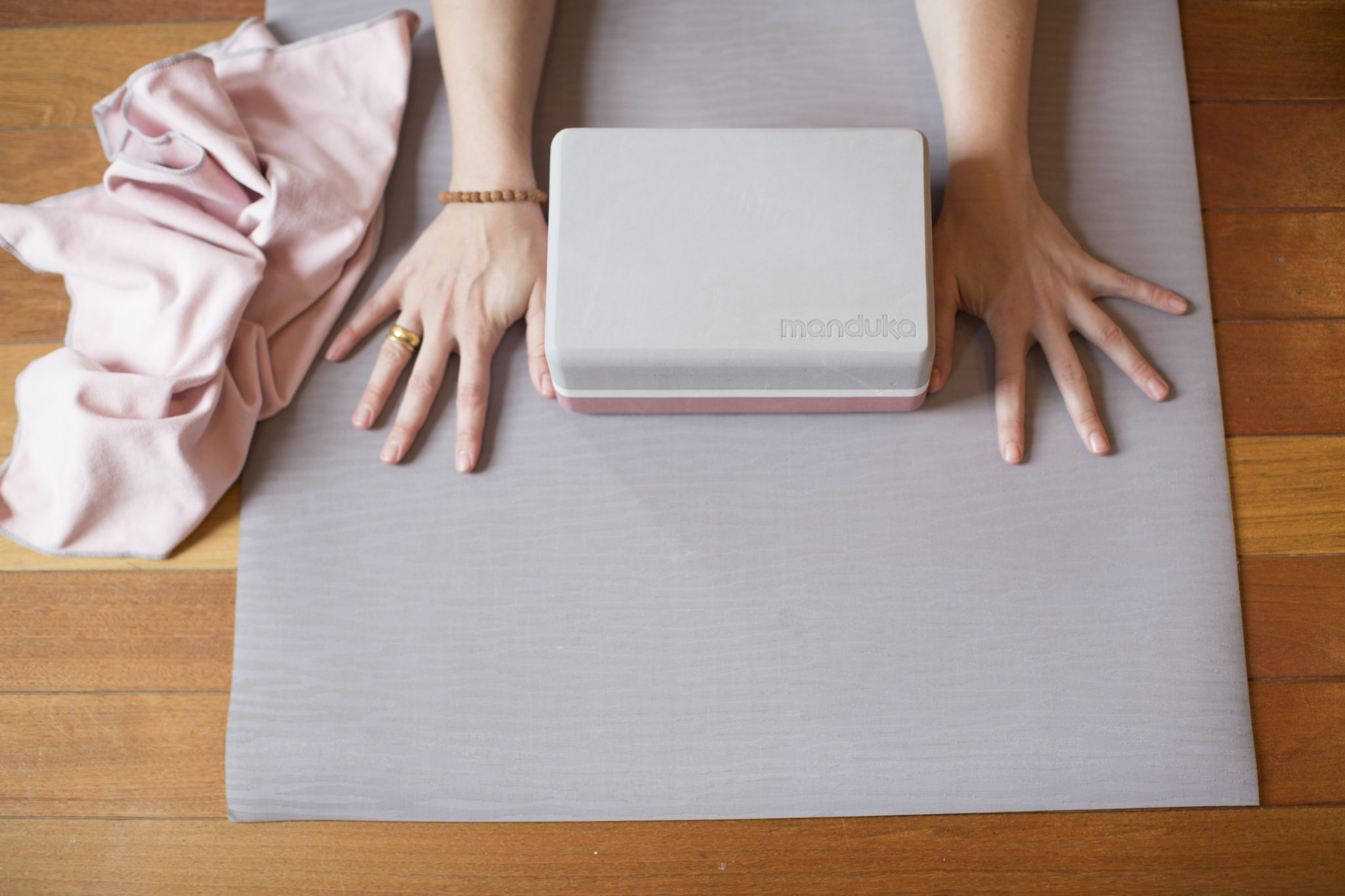
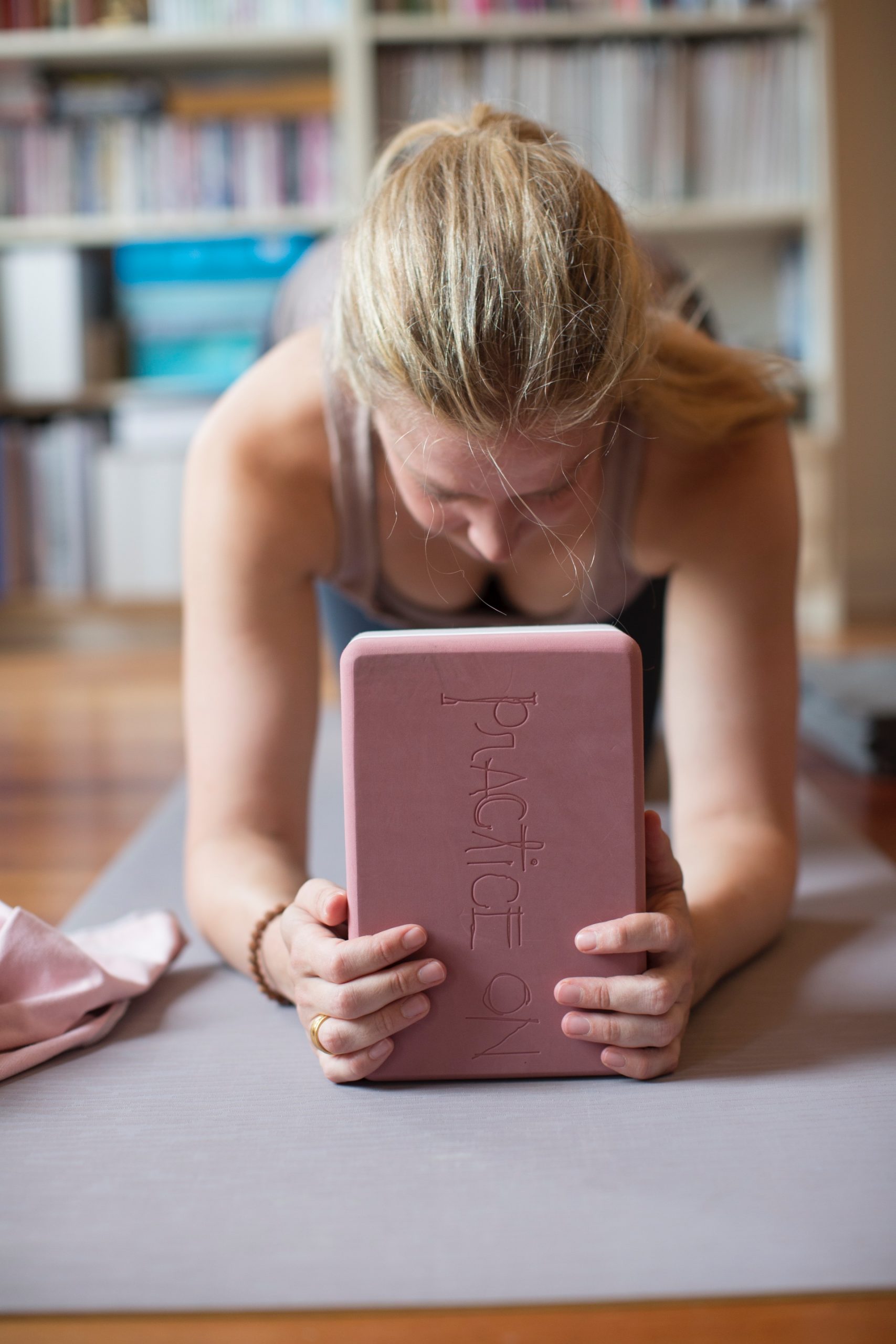
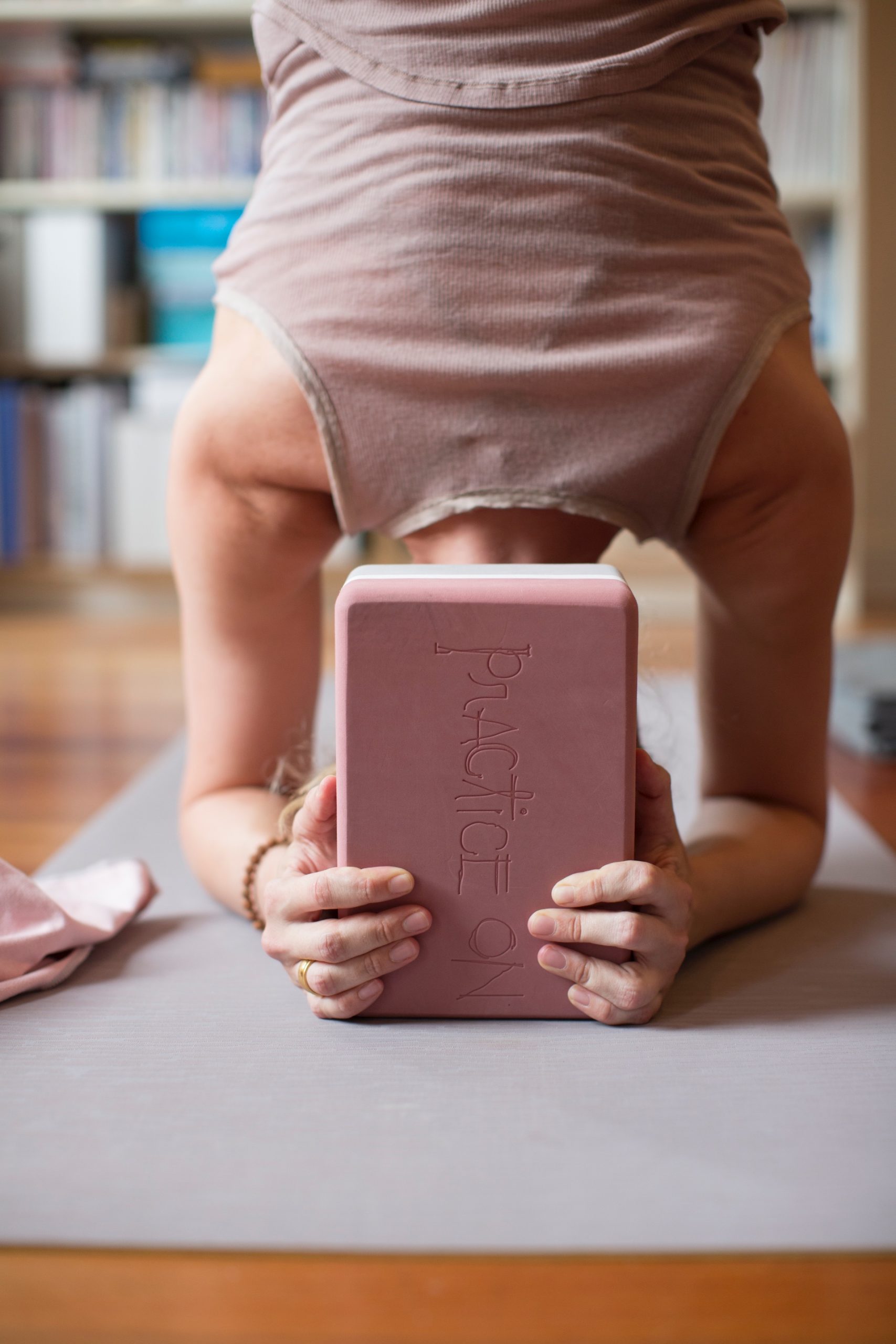
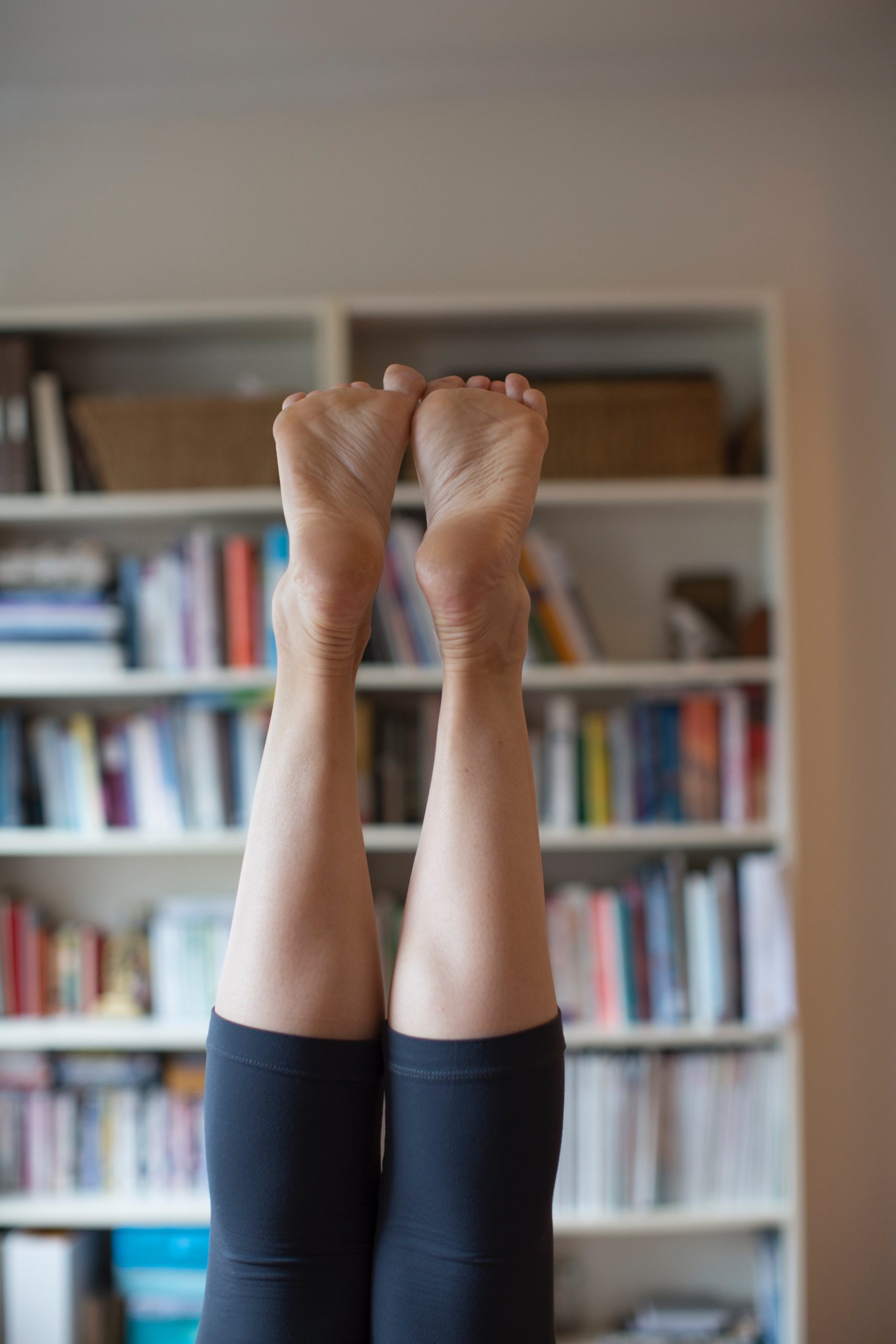
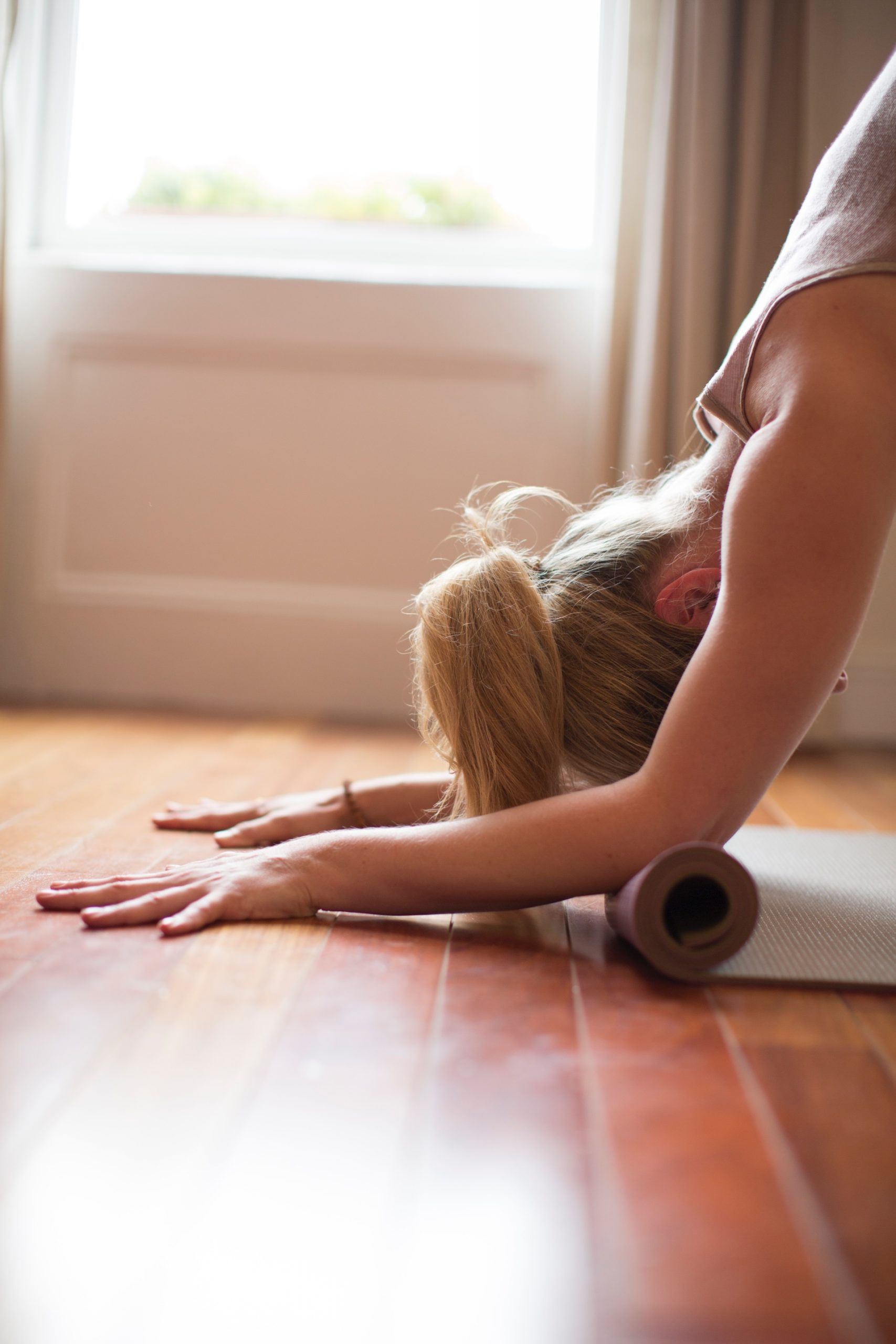


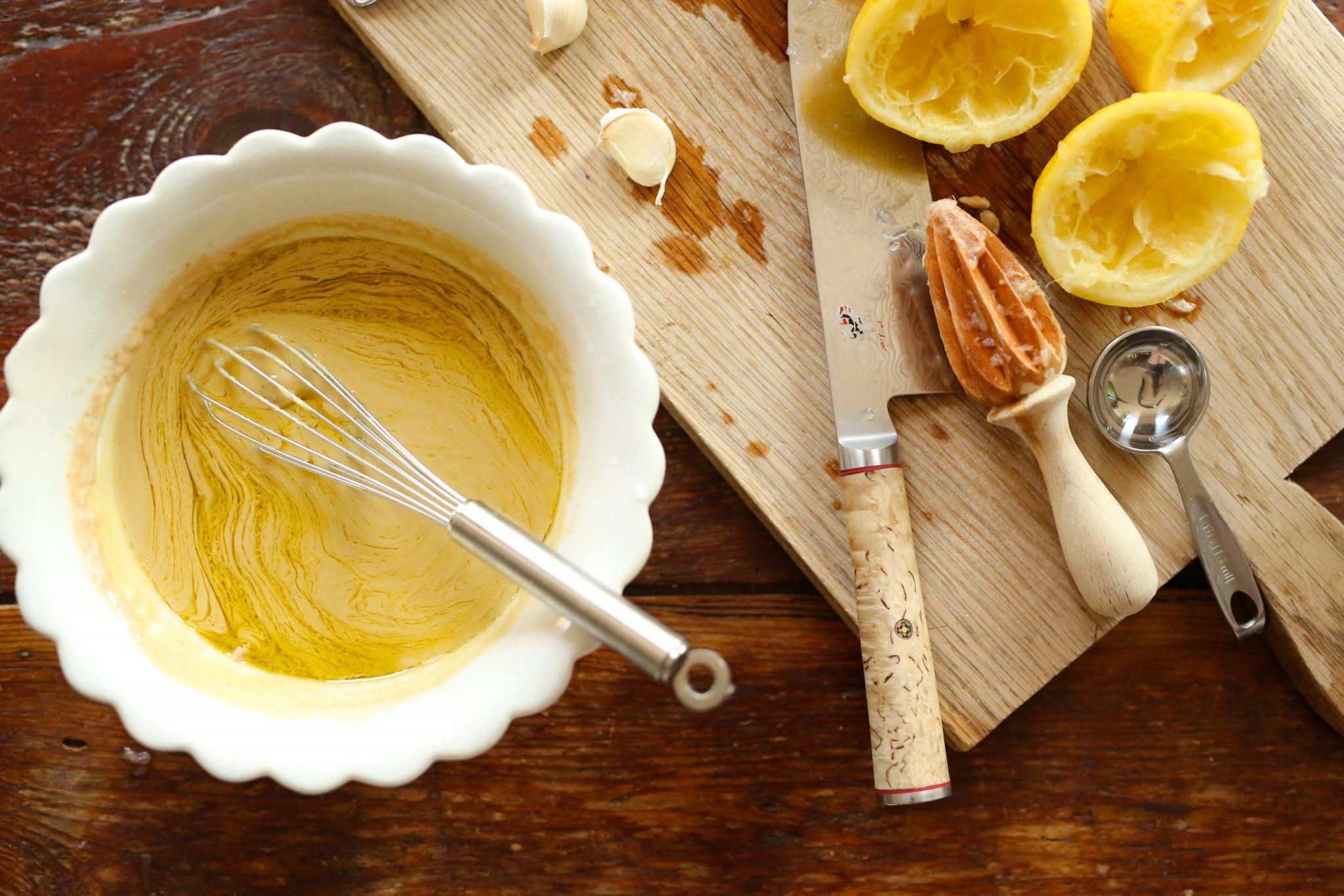


Chrissy!
Your piece about transforming headstand and pincha by “lengthening” your arms has completely become the answer for me and my short arms. I’m fine with headstand, but pincha has been incredibly difficult and frustrating. It was painful for my shoulders and I was always on the verge of collapsing on my head. But, now with the added height under my elbows, I can quite easily kick up and painlessly hang out in the pose for a while. Thank you! Thank you! Thank you!!!!
Lisa
Oh Lisa! That’s amazing!!! Yay! What a breakthrough! Love you.
right there with you on collapsing on the head in pincha Lisa 🙂
OMG Chrissy…..I was just de-constructing these 2 poses this morning for myself during my practice! LOL and came to the conclusion that my upper arms are short too…well, I kinda already knew that for other poses, but never really thought about it for pincha until this AM…….and it’s pincha that I was mainly exploring today….I usually do the 8-block version of sirsasana so my head doesn’t touch the floor (neck issues)……so I was playing with what I needed to do to make my upper arms longer and totally forgot about curling up the mat…..you should’ve seen what I was doing this AM…… 😉 thanks for this Chrissy and looking forward to seeing you at your workshop on April 30th! namaste………
Gina!!!! That is so awesome! Yay! Aren’t those epiphanies a source of such joy and delight? Keep playing and can’t WAIT to see you at Elevate Yoga! Much love to you.
????????????????
This is me too. 🙂 I’ve always had to push so hard into the floor to keep weight off my neck that I felt like my arm bones were pushed out of the sockets which is obviously not good – basically asking for serious shoulder injury and so I was curious and stood in frpnt of a mirror and did sirsasana arms upside down, i.e. standing on my feet and noticed that even with my upper arms close to in line with the ears the forearms were just barely above the top of my head. So I have stayed away from it since then. I need to work on my shoulder strength and core too (long story involving 4 pregnancies and c-sections) but once I feel strong enough I will try your option with blankets under the arms. 🙂
Hi Ulrika! Thanks so much for your comment. I’m so glad this post resonated with you. I recommend trying new variations at the wall so you have additional support while you navigate the props. Let me know how it goes! All my best, Chrissy